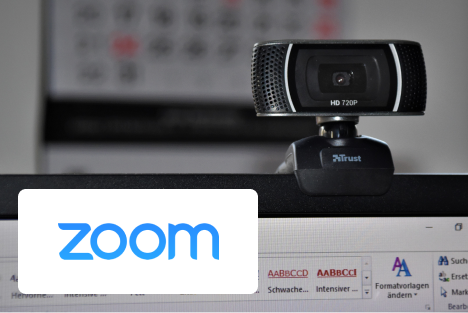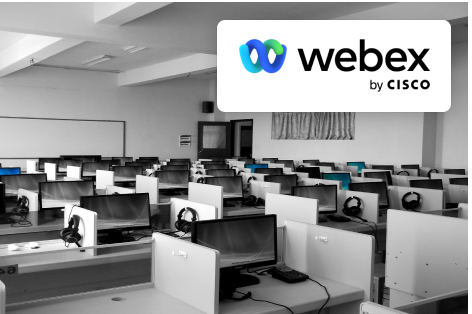Microsoft Teams is a popular communication tool for businesses and entrepreneurs but can leave much to be desired when compared to other options. While Microsoft offers robust office tools, like Microsoft Word, Excel and Power Point, there are better options for collaboration tools that make it easy to host one-on-one meetings and group conferences.
If you’re looking for an alternative to Microsoft Teams, you’re definitely in the right place. In this article, you’ll discover 6 alternatives to Microsoft Teams and find a communication tool that offers the audio and video tools you need to take your collaboration to the next level.
6 Alternatives to Microsoft Teams

FreeConferenceCall.com
FreeConferenceCall is one of the best options for video and audio conferencing today. Their collaboration suite is among the top services, offering communication tools comparable to more popular brands but at a price that its community loves – free.
Each US-based account has a handful of features that makes this option a better option than competitors – up 1,000 participants per group meeting, high-definition quality conferencing, virtual phones, and advanced tools like screen sharing and call recording to name a few.
What sets FreeConferenceCall apart from others is its missions to help those in need, like charities, schools, and nonprofits, get accessible communication tools.
Pro
- Up to 1,000 participants per meeting
- Best-in-class quality audio and video conferencing
- Noble mission to help those in need get access to reliable communication tools
Cons
- Lacking admin control for business solutions

Huddle.Team
Huddle.Team is FreeConferenceCall’s premium conferencing option focused on supporting medium to large-sized enterprises.
What sets Huddle.Teams apart from FreeConferenceCall is its improved admin control for business and team management.
The platform allows the person in charge of the account to control which users under a given license have access to the communication features available. For example, if a communication manager needs to give virtual phone access to the sales department but limit access to other departments, that becomes easy through the admin portal.
Huddle.Team makes it easy for businesses to take their enterprise to the next level by allowing the ability to monitor usage and permissions. The best part about Huddle is its revolutionary pricing.
Pros
- Powerful monitoring and management tools
- Amazing pricing
- Built on the reliable FreeConferenceCall network
Cons
- Best for Larger Businesses

Zoom
Zoom Meetings is a popular option available for conferencing. When Covid-19 first hit, Zoom went viral and grew exponentially in popularity.
Since its peak, many users found other options for conferencing, but Zoom still remains a great option for services like face-to-face calling and conferencing in small groups. However, Zoom has had experiences in the past with security breaches and problems with invasion of privacy.
Zoom offers great audio and video services while boasting a beautifully crafted user interface. On the downside, Zoom’s offers are expensive, beginning at $14.99 per month for its most basic package.
Pros
- Popular option
- Beautiful user interface
Cons
- Expensive
- Limited to small groups
- 40-minute limit for free accounts
- Experienced security issues in the past

Google Meet
Google Meet is a great option for users looking for a fast option for face-to-face calling. While not as robust as other options, what Google Meet lacks in functionality it makes up for its accessibility.
Google Meet users operate mostly through web browsers, making it available on any computer with an internet connection.
Pros
- Easy to use
- Available through web browser
Cons
- Can be finicky at times
- Limited in its functions, accessibility, and control
- 1 Hour Limits

Cisco WebEx
Cisco WebEx is one of the oldest brands out there, having popularized peer-to-peer conferencing and group conferences. Since its initial creation, Cisco WebEx has gone through several iterations, each improving on the last.
WebEx is a great option for large businesses looking for a solution that’s been proven to work time and time again. Its track record for conferencing makes it one of the most reliable options on the market.
However, WebEx pricing starting at $25 per month per account for business makes the entry for use very expensive. If a business can afford WebEx, it can definitely offer a great option for conferencing.
Pros
- Well-refined service
- Built for supporting large businesses
Cons
- Very expensive
- Limited free options

Slack
Slack is an amazing communication service that offers a handful of collaboration tools, from organized channels to face-to-face communication. Its focus on text-based collaboration makes it a wonderful companion for smaller teams and businesses just getting their company off the ground.
While not focused on audio and video, it offers a handful of options for face-to-face communication in small groups. What it lacks in audio and video communication it makes up for in its collaboration toolkit.
Slack automatically saves conversations in channels that can then be easily found through their search function. While not exactly an immediate competitor to Microsoft Teams, Slack is a great option for those looking for a lite option for conference and collaboration.
Pros
- Easy to use and widely familiar among professional teams
- Robust collaboration tools
Cons
- Maximum of 15 people in a group meeting for Slack’s basic package
- Not focused on video and audio communication


